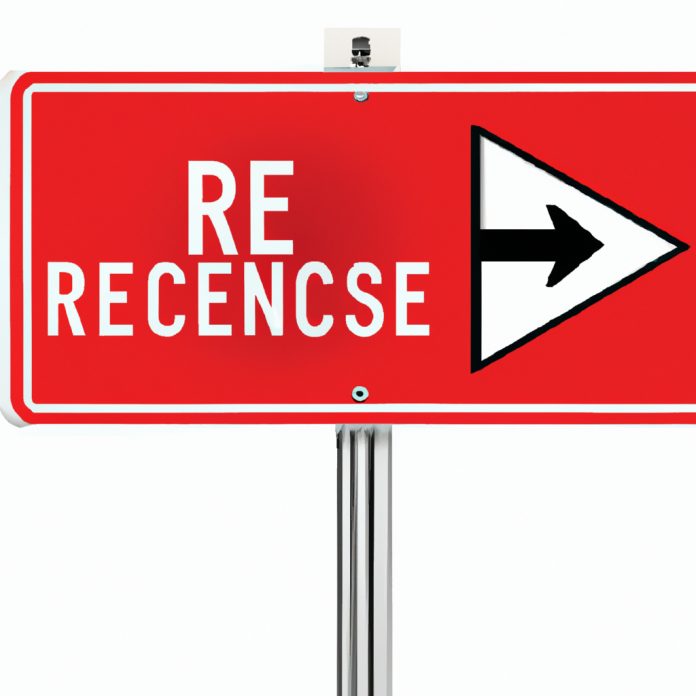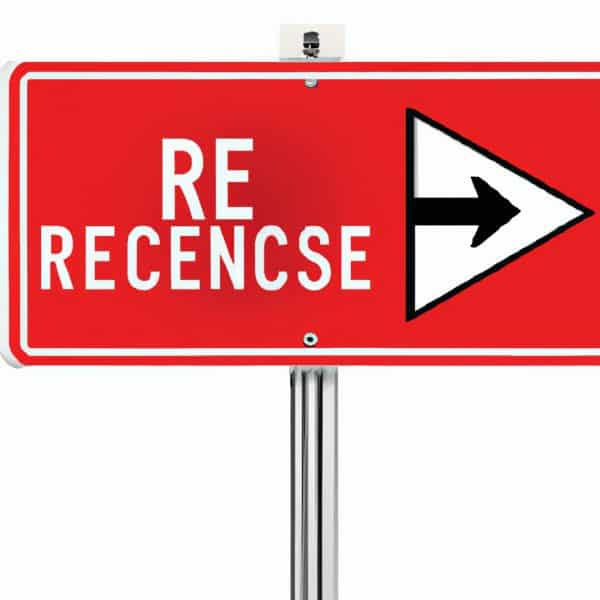So you’ve stumbled upon the term “301 redirect” and you’re curious to find out what it’s all about. Well, in a nutshell, a 301 redirect is a way to permanently direct visitors from one URL to another. It’s like a signpost that tells search engines and users that your content has moved to a new location. But why would you need to use a 301 redirect? Let’s find out! A 301 redirect is a type of HTTP redirect that permanently redirects a user from one URL to another. It is a way to inform browsers and search engines that a particular web page has been moved or permanently redirected to a new location. This is done by sending a status code of 301, which signifies that the requested page has permanently moved to a different URL.
Review contents
Definition of a 301 Redirect
A 301 redirect is a server-side instruction that tells browsers and search engines that a web page has moved permanently. When a user or search engine crawler visits a URL that has been redirected, they are automatically redirected to the new URL specified in the redirect instruction. The original URL is no longer accessible to users or search engines.
Purpose of a 301 Redirect
The purpose of a 301 redirect is to ensure a seamless user experience and to inform search engines that a page has been permanently moved. By implementing a 301 redirect, you can redirect traffic from the old URL to the new URL without losing any link equity or SEO value. This helps to preserve the rankings and authority of the original page.
When to Use a 301 Redirect
A 301 redirect should be used in various situations, including:
-
Website Restructuring or Rebranding: When you are revamping your website or undergoing a rebranding process, you may need to change the URL structure or move content to different pages. In such cases, a 301 redirect can be used to redirect users and search engines to the new URLs.
-
Updating URL Structure: If you want to change the URL structure of your website for better organization or SEO purposes, implementing 301 redirects allows you to update the URLs without losing traffic or search engine rankings.
-
Consolidating Duplicate or Similar Content: If you have multiple pages that contain similar or duplicate content, it is advisable to consolidate them into a single page. By using a 301 redirect, you can redirect the traffic from the duplicate pages to the main page, consolidating the content and improving the user experience.
How Does a 301 Redirect Work?
HTTP Status Code
When a server receives a request for a URL that has been permanently redirected, it responds with a 301 HTTP status code. This status code tells the user’s browser or search engine crawler that the requested page has moved permanently and provides the new URL where the page can be found.
Browser Behavior
When a browser encounters a 301 redirect, it automatically redirects the user to the new URL specified in the redirect instruction. This ensures that users are seamlessly redirected to the correct page without any manual intervention.
Search Engine Behavior
Search engines, such as Google, also follow 301 redirects. When a search engine crawler encounters a 301 redirect, it updates its index to reflect the new URL and passes any authority or ranking signals from the old page to the new page. This helps preserve the SEO value of the redirected content.
Link Juice Preservation
One of the key benefits of a 301 redirect is that it preserves the “link juice” or authority of the redirected page. When other websites link to the original URL, the link equity is passed to the new URL. This ensures that the redirected page retains its SEO value and ranking potential.
Best Practices for Implementing a 301 Redirect
Choosing the Right Redirect Type
When implementing a redirect, it is important to choose the correct redirect type. A 301 redirect should be used for permanent redirects, while a 302 redirect is used for temporary redirects. Using the correct redirect type ensures that search engines and browsers interpret the redirect correctly.
Updating the .htaccess File
If you are using an Apache server, the most common way to implement a 301 redirect is by editing the .htaccess file. The .htaccess file is a configuration file that allows you to modify the behavior of your server. By adding redirect instructions to this file, you can redirect specific URLs or entire directories to new locations.
Redirecting Individual Pages
To redirect individual pages, you need to specify the old URL and the new URL in the redirect instruction. This can be done using the Redirect or RedirectMatch directive in the .htaccess file. For example:
Redirect 301 /old-page.html http://www.example.com/new-page.html Redirecting Entire Domains
If you are moving an entire website to a new domain, you can use a 301 redirect to redirect all URLs from the old domain to the corresponding URLs on the new domain. This can be done by adding the following directive to the .htaccess file:
RewriteEngine on RewriteRule ^(.*)$ http://www.newdomain.com/$1 [R=301,L]
Common Mistakes to Avoid with 301 Redirects
Not Implementing Redirects Correctly
One common mistake is not implementing redirects correctly, which can result in broken links and negative impacts on SEO. It is important to ensure that the redirect instructions are properly implemented to avoid any issues.
Neglecting to Update Internal Links
When implementing a 301 redirect, it is crucial to update all internal links on your website to point to the new URLs. Failure to do so can result in broken or redirected links within your own website, leading to a poor user experience and potential loss of rankings.
Forgetting to Notify Search Engines
After implementing a 301 redirect, it is important to inform search engines of the change. This can be done by submitting an updated sitemap or using the search engine’s webmaster tools. Notifying search engines allows them to update their indexes and ensure that the new URLs are properly indexed.
How to Implement a 301 Redirect
Apache Server
To implement a 301 redirect on an Apache server, you can use the .htaccess file. This file is generally located in the root directory of your website. You can use the Redirect or RedirectMatch directives to specify the old and new URLs.
NGINX Server
If you are using an NGINX server, you can implement a 301 redirect by editing the server configuration file. This can be done by adding a rewrite rule to the server block that specifies the old and new URLs.
WordPress Plugin
If you have a WordPress website, you can use a plugin to easily implement 301 redirects without manually editing server files. There are several popular plugins available, such as Redirection and Yoast SEO, that allow you to manage redirects through the WordPress admin interface.
Other Website Builders
Most website builders and content management systems have built-in functionality to handle 301 redirects. This may involve using a plugin or accessing a redirect management interface within the platform’s settings. Consult the documentation or support resources provided by your website builder to learn how to implement 301 redirects.
Examples of When to Use a 301 Redirect
Website Restructuring or Rebranding
If you are making significant changes to your website’s structure or undergoing a rebranding, you will likely need to redirect URLs to ensure a smooth transition. For example, if you are changing your domain name or restructuring your categories and subpages, implementing 301 redirects will ensure that visitors and search engines are redirected to the correct pages.
Updating URL Structure
If you are updating the URL structure of your website, it is essential to use 301 redirects to redirect old URLs to the new ones. This can be necessary when migrating from a non-SEO friendly URL structure to a more optimized one or restructuring the URLs for better organization and usability.
Consolidating Duplicate or Similar Content
If you have multiple pages on your website that contain similar or duplicate content, it is recommended to consolidate them into a single page. By using a 301 redirect, you can redirect the traffic from the duplicate pages to the main page, consolidating the content and improving the user experience.
Benefits of Using 301 Redirects
Preserving SEO Value
One of the primary benefits of using 301 redirects is that they preserve the SEO value of the redirected content. By redirecting the traffic and link equity from the old URL to the new URL, you ensure that the redirected page retains its rankings and authority in search engine results.
Enhancing User Experience
Implementing 301 redirects helps to enhance the user experience by automatically redirecting users to the new location of a web page. This ensures that users are not met with broken links or error messages when trying to access content that has been moved.
Maintaining Traffic Flow
By redirecting old URLs to their corresponding new URLs, you can maintain the flow of traffic to your website. This prevents users from encountering dead ends or error pages and ensures that they can still access the content they are looking for.
Preventing Error Pages
Without proper redirects, users who visit outdated or removed URLs may encounter 404 error pages. By implementing 301 redirects, you can redirect users from outdated URLs to relevant pages, preventing them from landing on error pages and potentially leaving your website.
SEO Impact of 301 Redirects
Passing Link Authority
When you implement a 301 redirect, the link equity or authority of the redirected page is passed to the new URL. This means that any backlinks pointing to the old URL will now pass their ranking signals to the new URL, helping it to gain or maintain its search engine rankings.
Consolidating Ranking Signals
If you have multiple URLs that target the same keywords or have similar content, it can dilute the ranking signals. By consolidating these URLs into a single page and implementing 301 redirects, you can consolidate the ranking signals and improve the overall search engine rankings of the target page.
Dealing with SEO Issues
301 redirects can be a valuable tool for resolving SEO issues, such as duplicate content or canonicalization problems. By redirecting duplicate or similar content to a single page, you can consolidate the SEO value and avoid issues such as duplicate content penalties.
Potential Negative Effects
While 301 redirects are generally beneficial, it is important to note that they can potentially have negative effects if implemented incorrectly or excessively. Redirect chains, which occur when multiple redirects are in place, can slow down page load times and confuse search engine crawlers. It is essential to ensure that redirects are implemented correctly and avoid excessive or unnecessary redirects.
Difference Between a 301 Redirect and Other Redirect Types
301 vs. 302 Redirects
The primary difference between a 301 redirect and a 302 redirect is the permanence of the redirect. A 301 redirect is permanent and tells search engines and browsers that the redirected page has moved permanently. In contrast, a 302 redirect is temporary and tells search engines that the redirected page has moved temporarily and will eventually return to its original location.
301 vs. 404 Errors
A 301 redirect is used when a page has been permanently moved to a new URL, while a 404 error occurs when a page cannot be found. A 301 redirect is a proactive approach to redirect users and search engines to the correct page, whereas a 404 error indicates that the requested page does not exist.
301 vs. Canonical Tags
Canonical tags are used to indicate the preferred version of a web page when there are multiple versions with similar content. While canonical tags help search engines understand the relationship between similar pages, they do not redirect users. In contrast, a 301 redirect physically redirects users and search engines to a different URL.
Conclusion
In conclusion, a 301 redirect is a crucial tool for website owners and SEO professionals. It allows you to redirect users and search engines from old URLs to new ones, preserving the SEO value and ensuring a smooth user experience. By implementing 301 redirects correctly and following best practices, you can effectively manage website restructuring, consolidate content, and maintain search engine rankings. Implementing 301 redirects is essential for maintaining the health and visibility of your website in the ever-changing digital landscape.




























